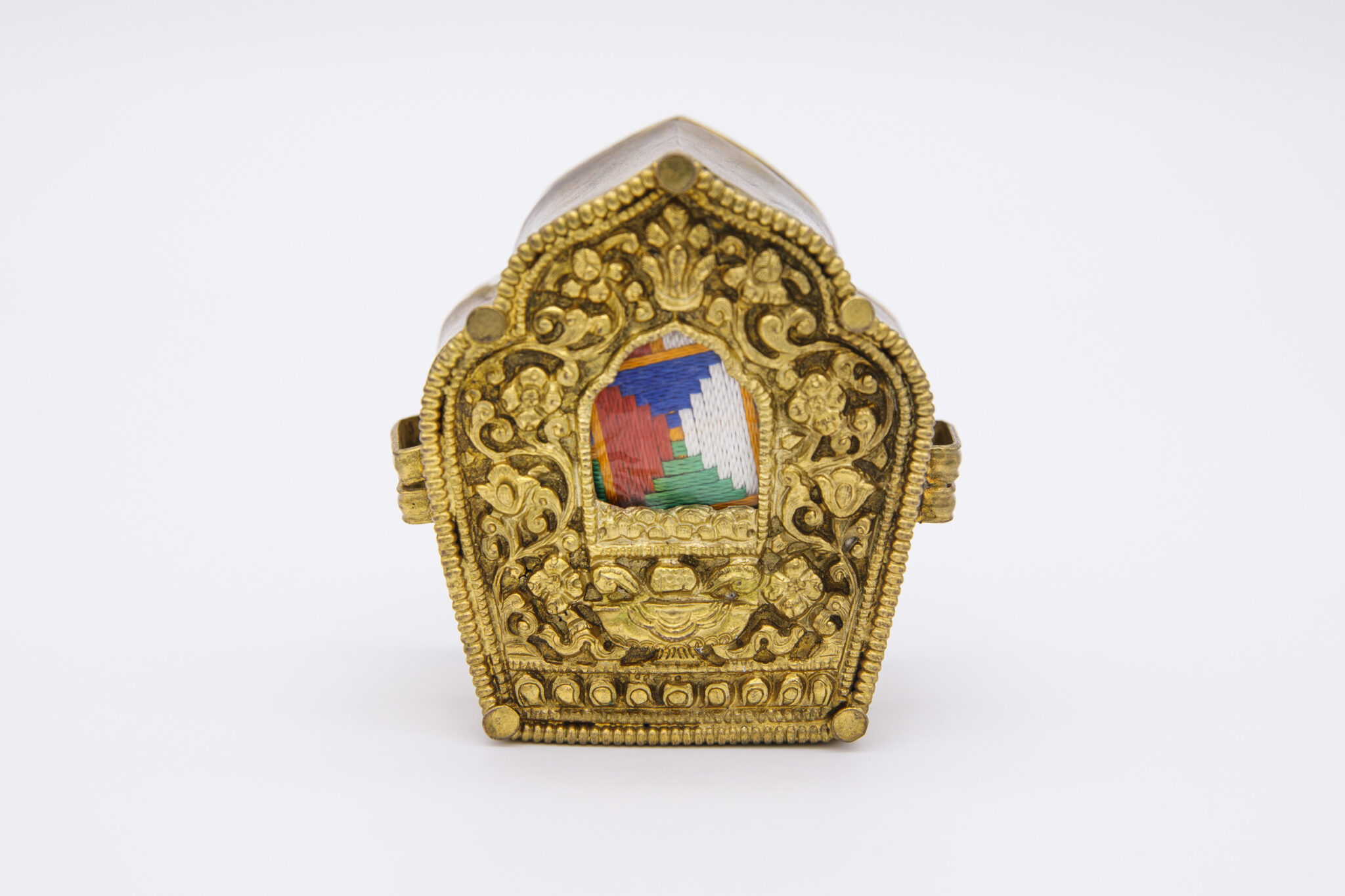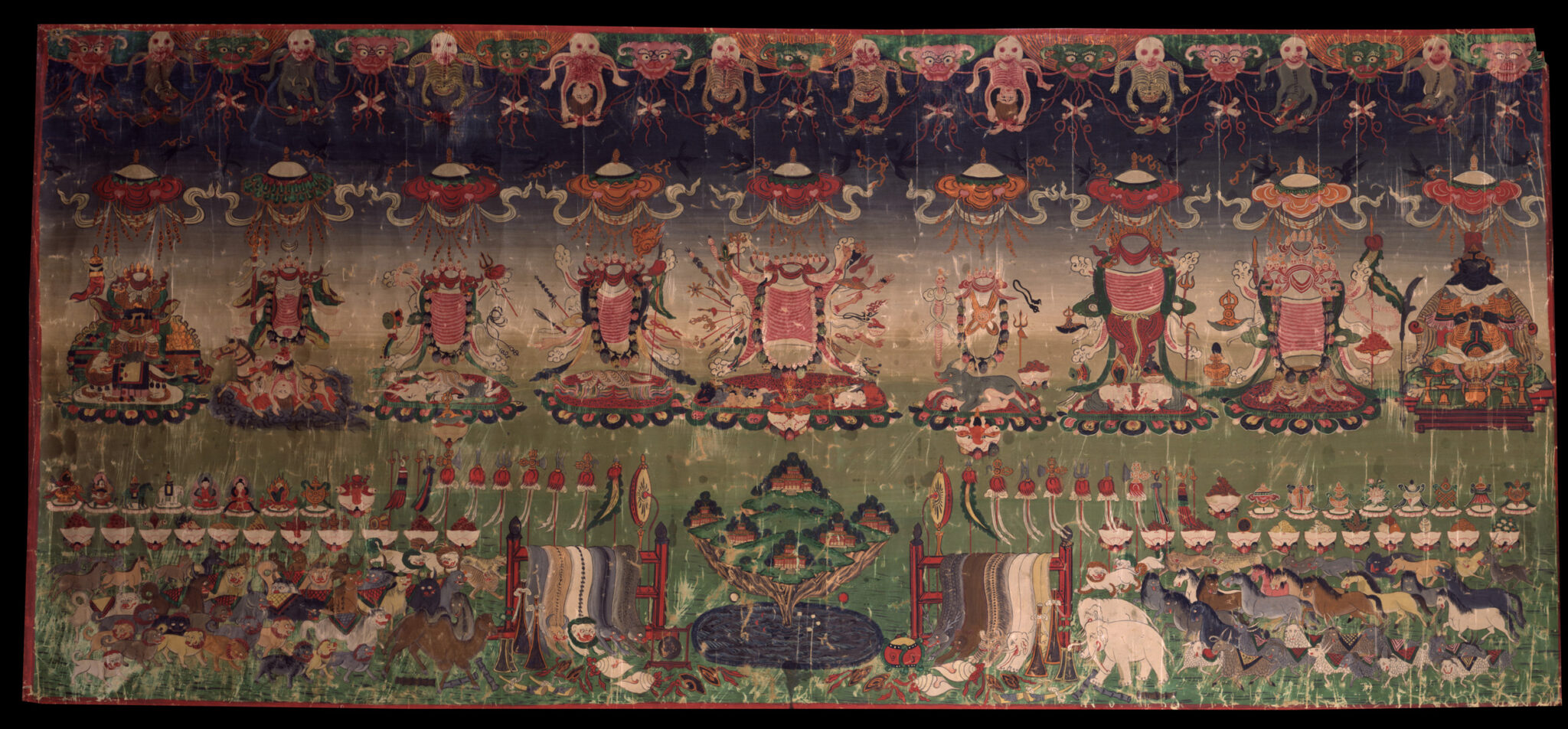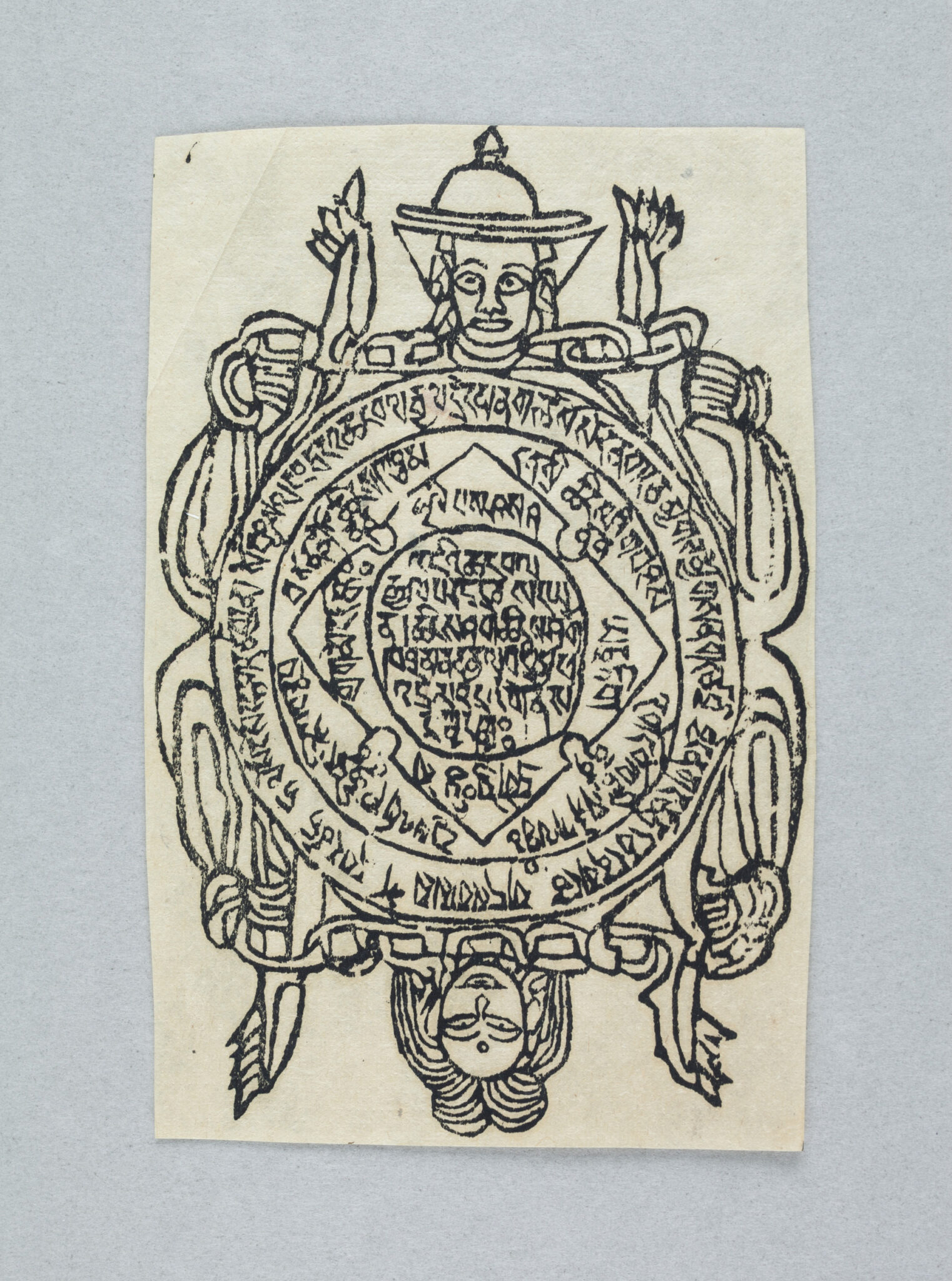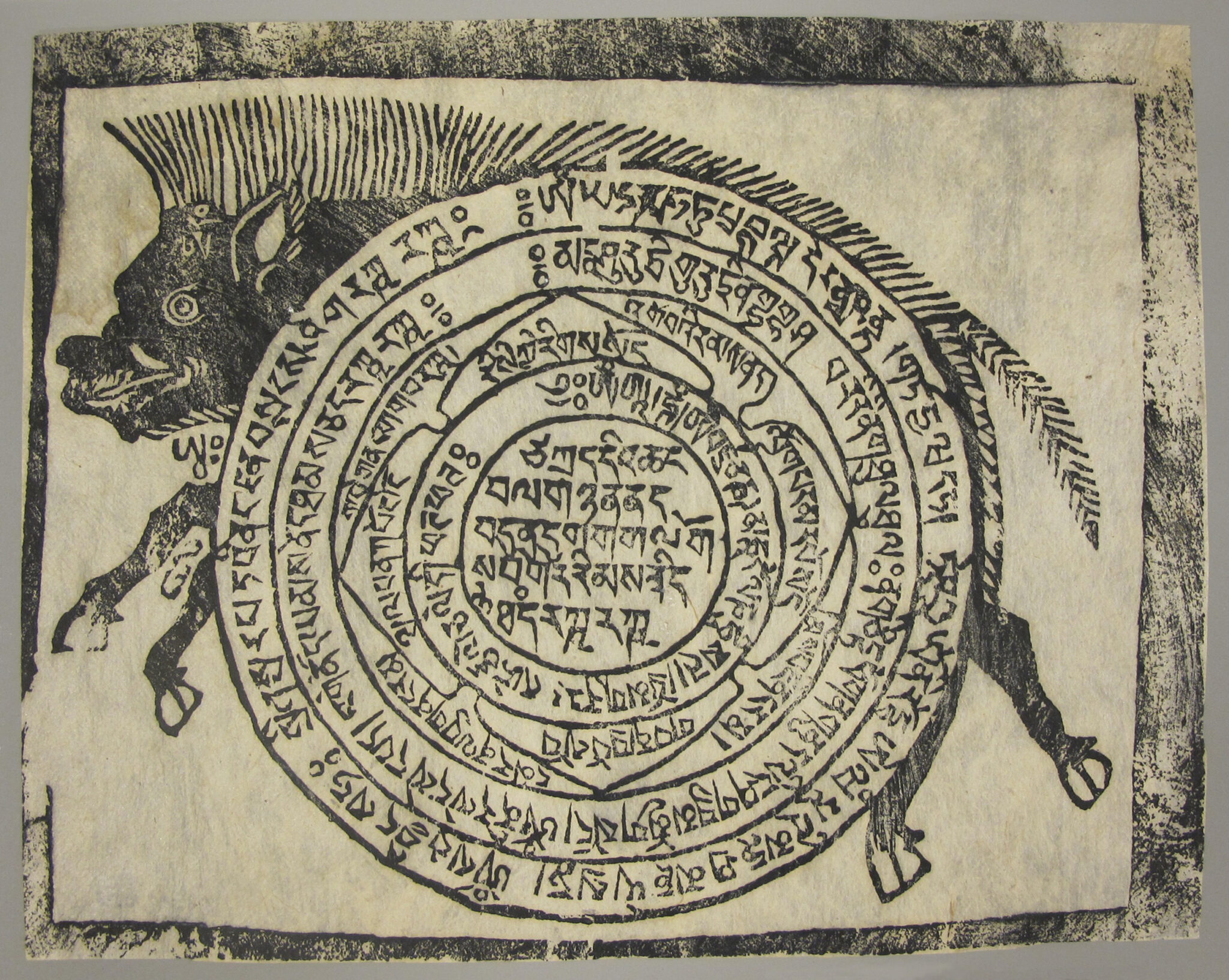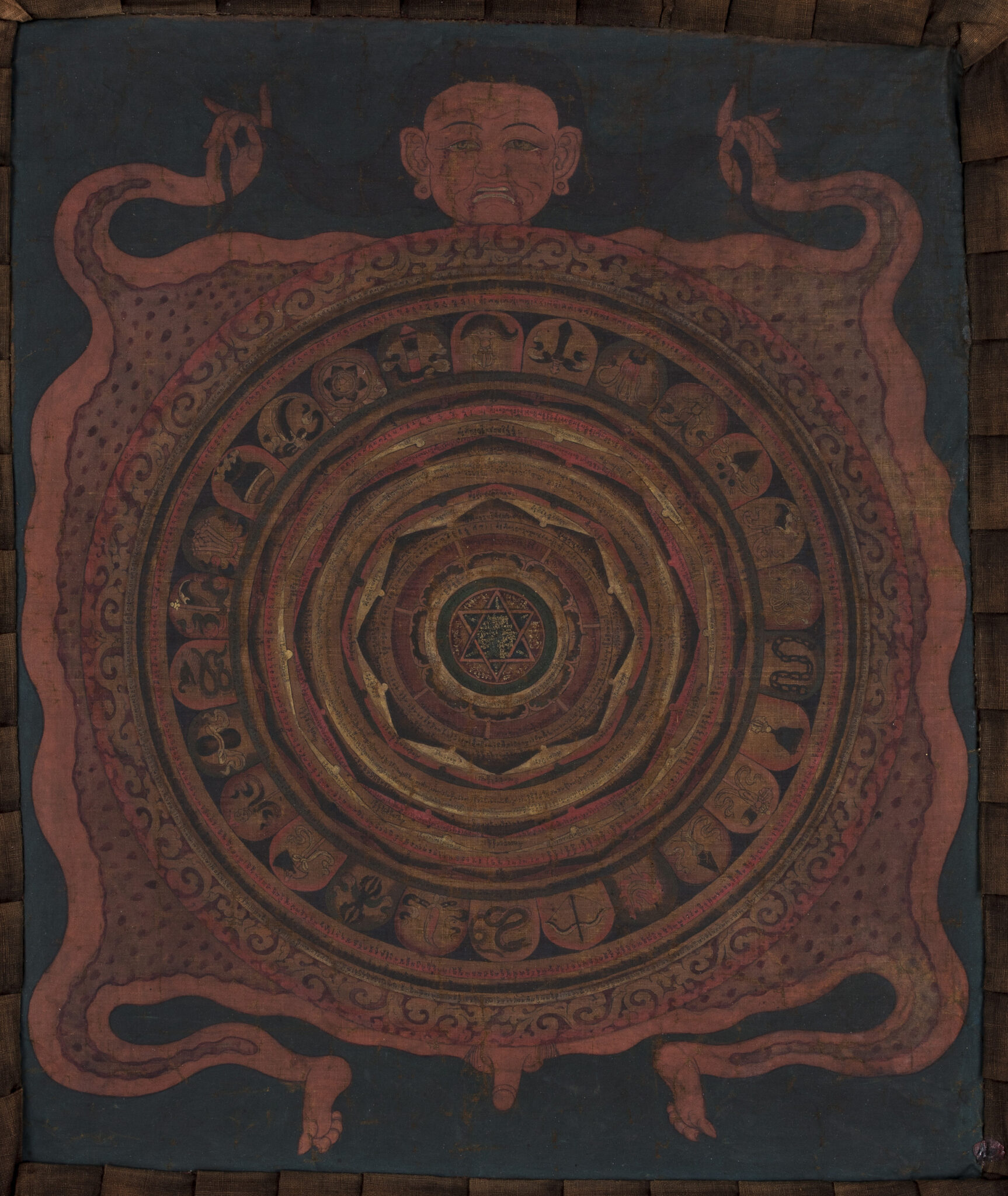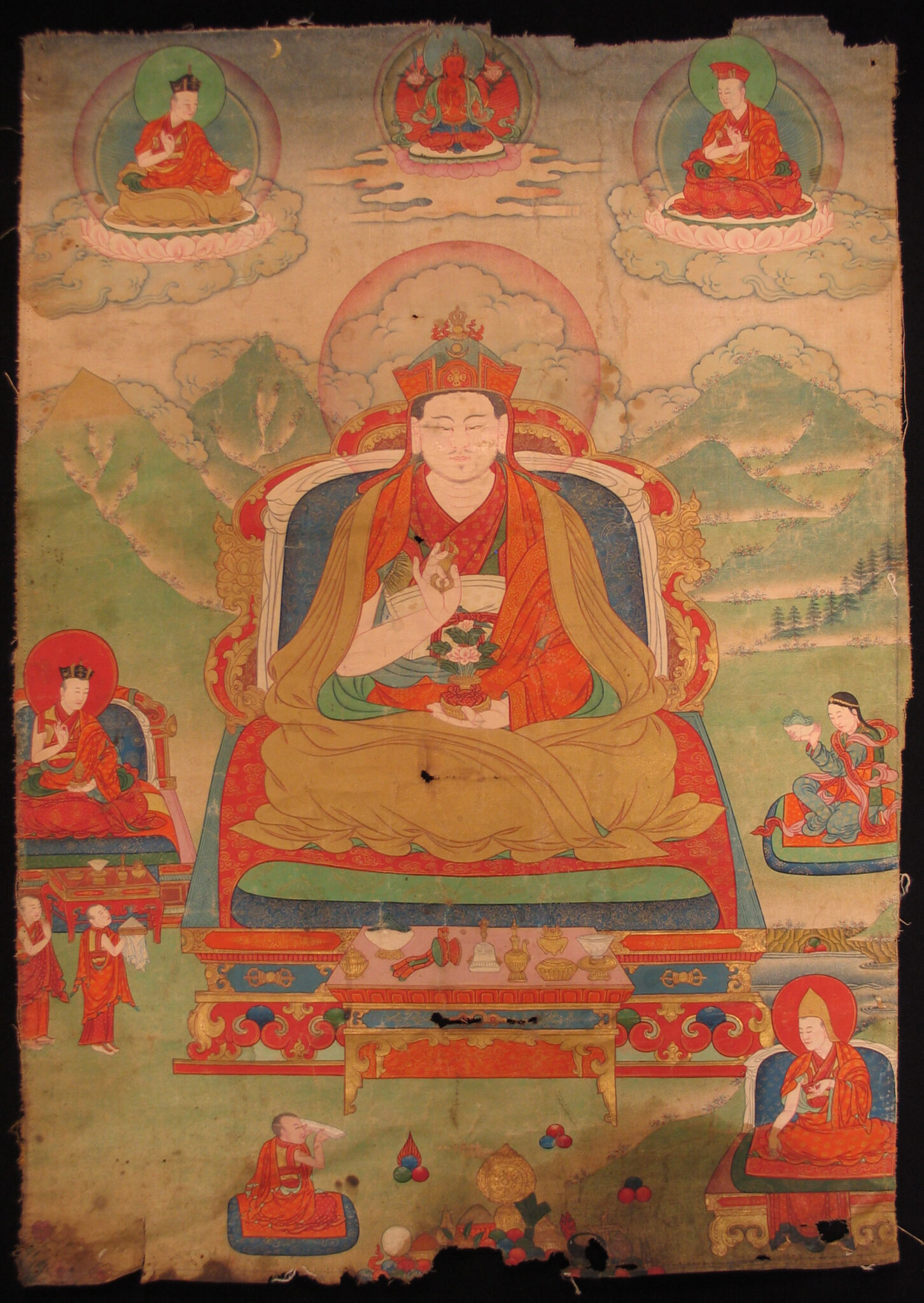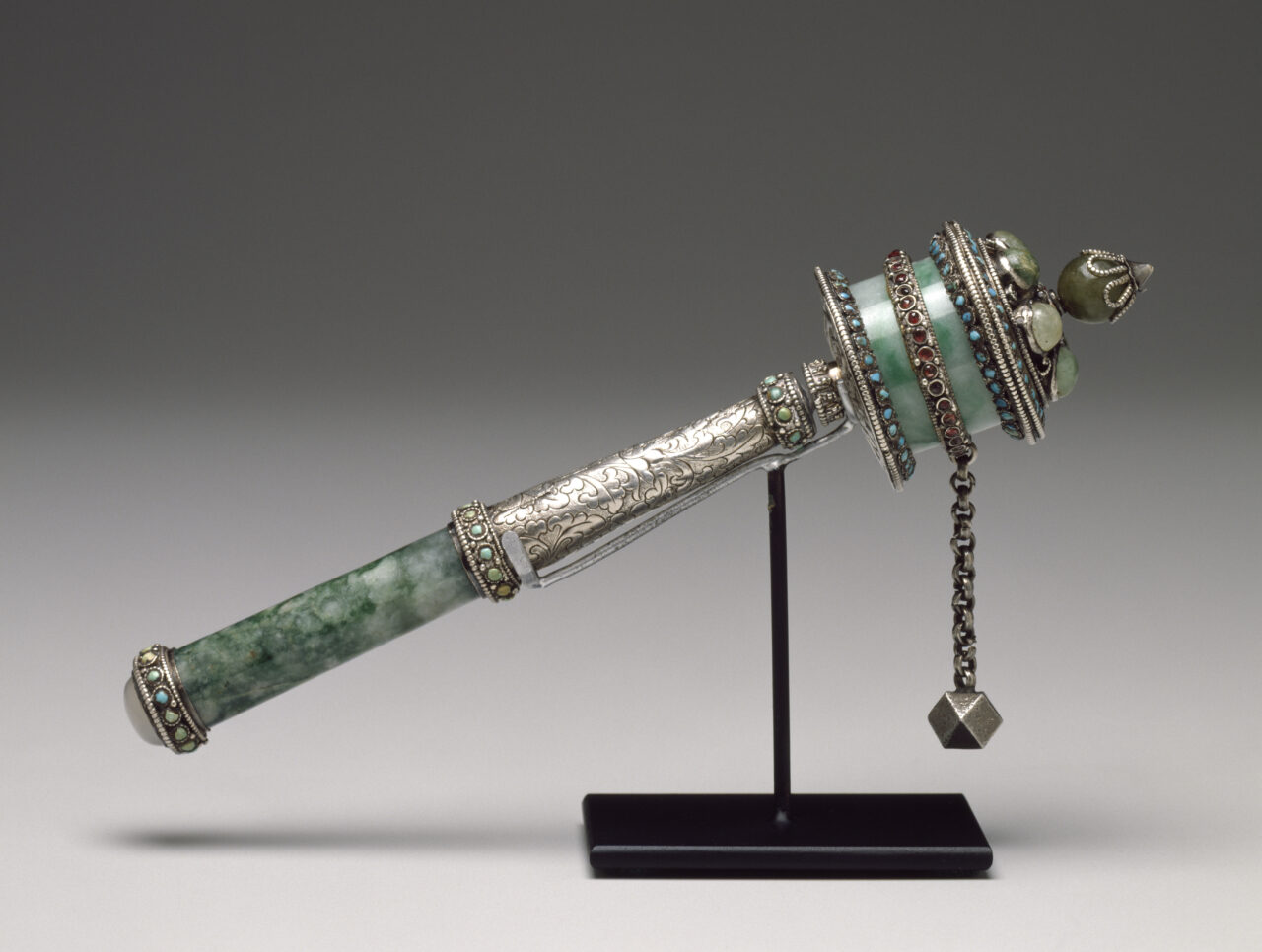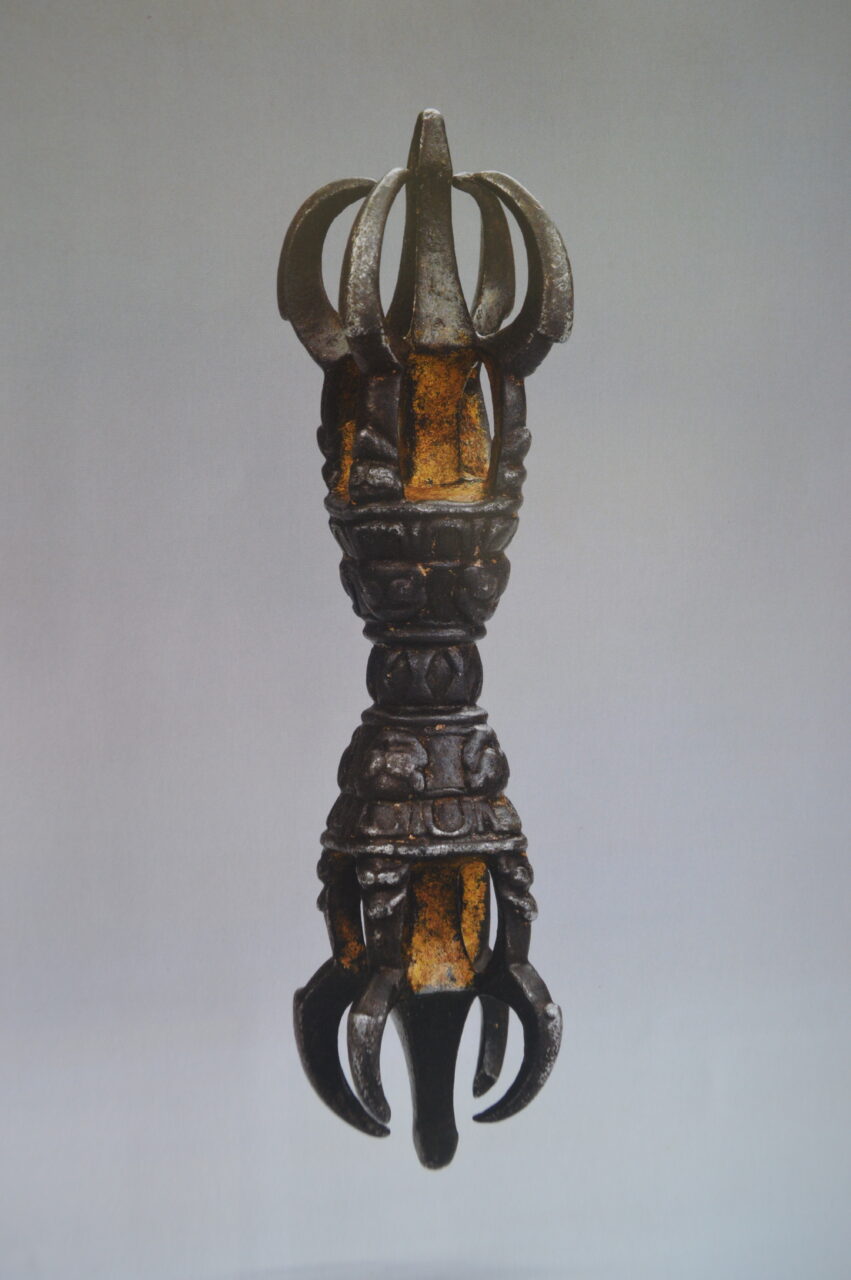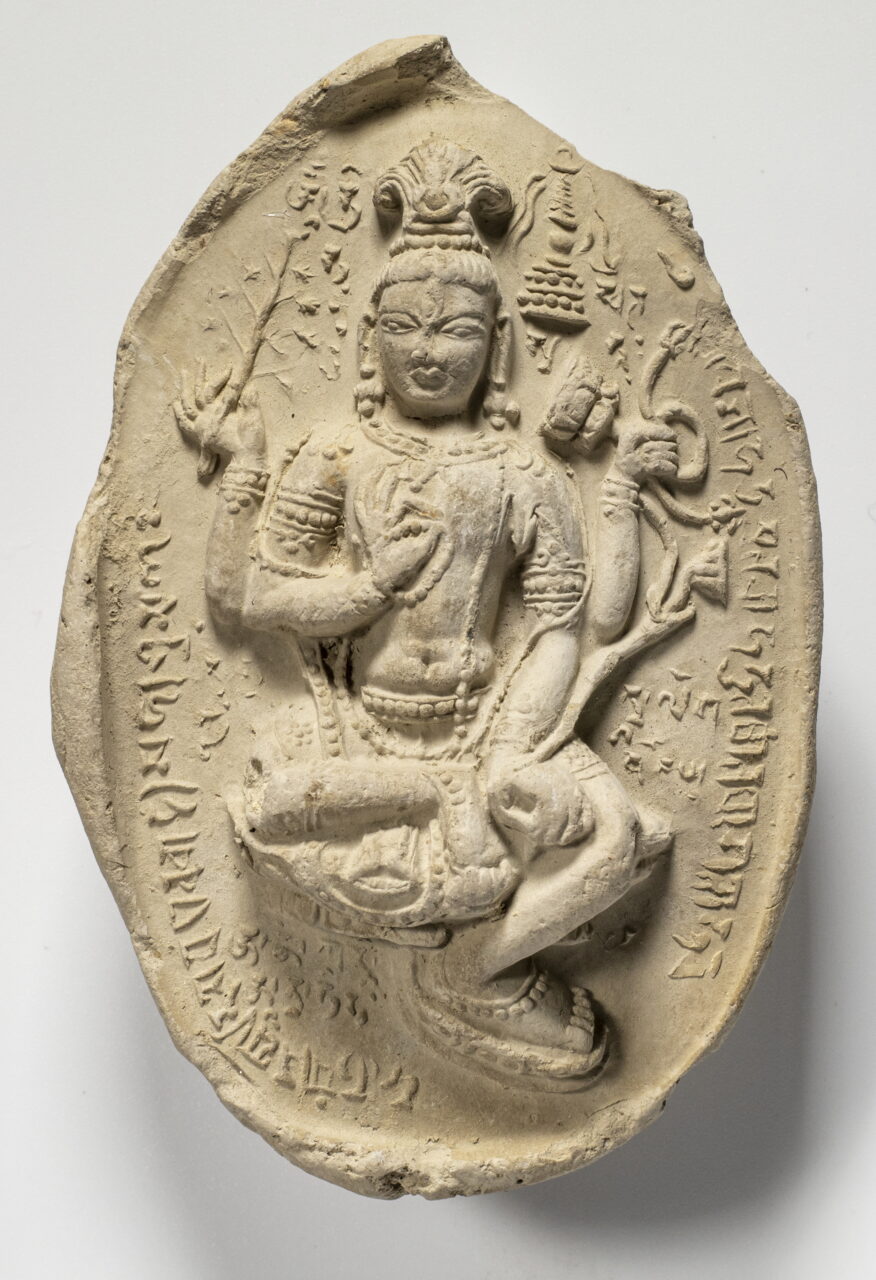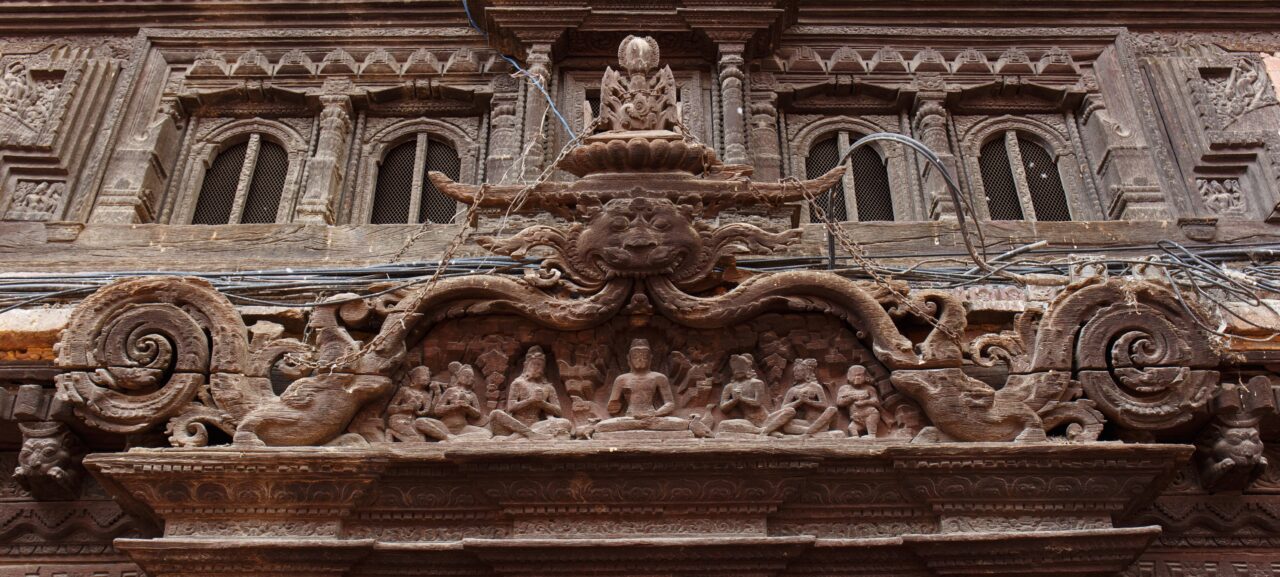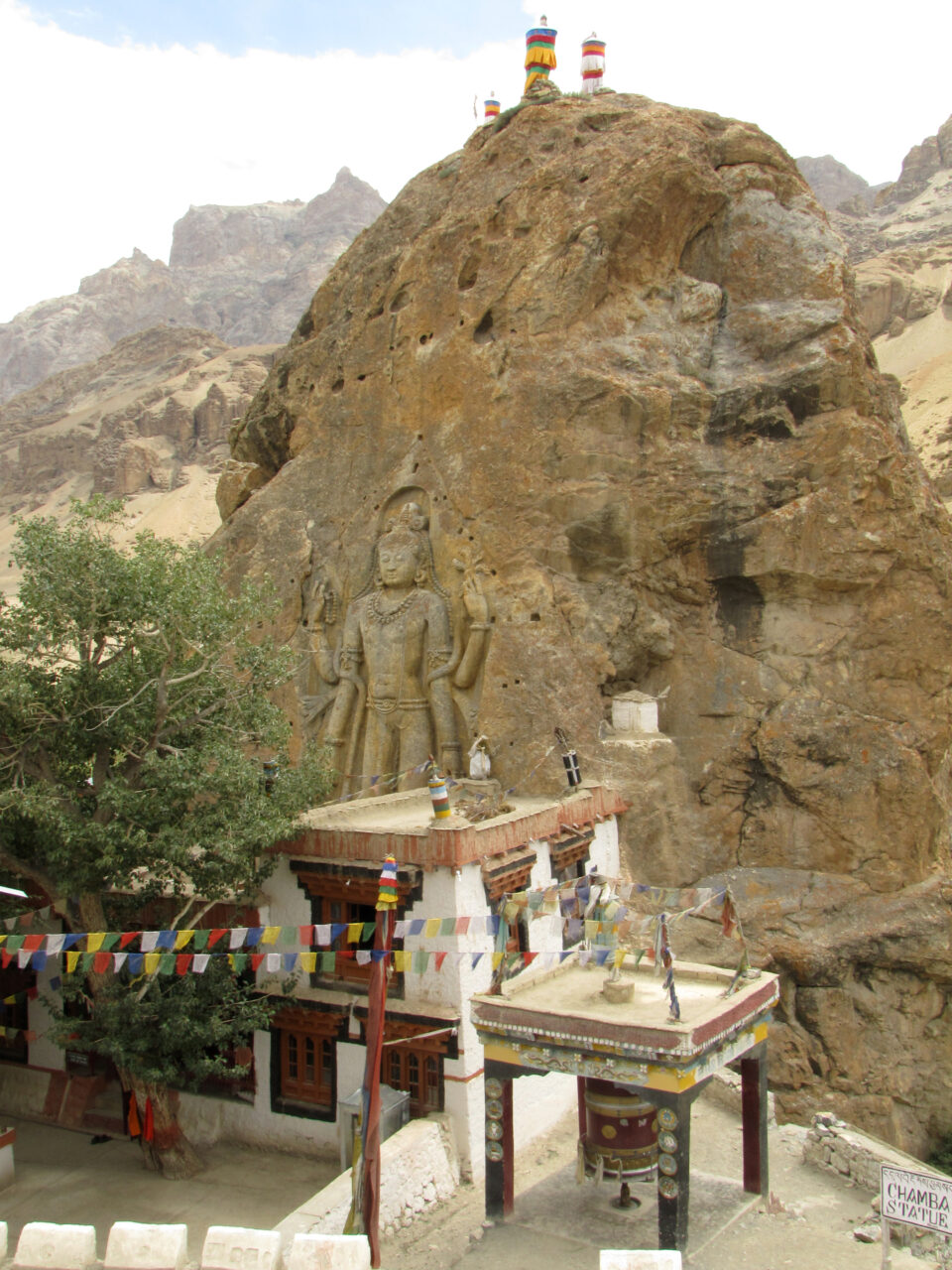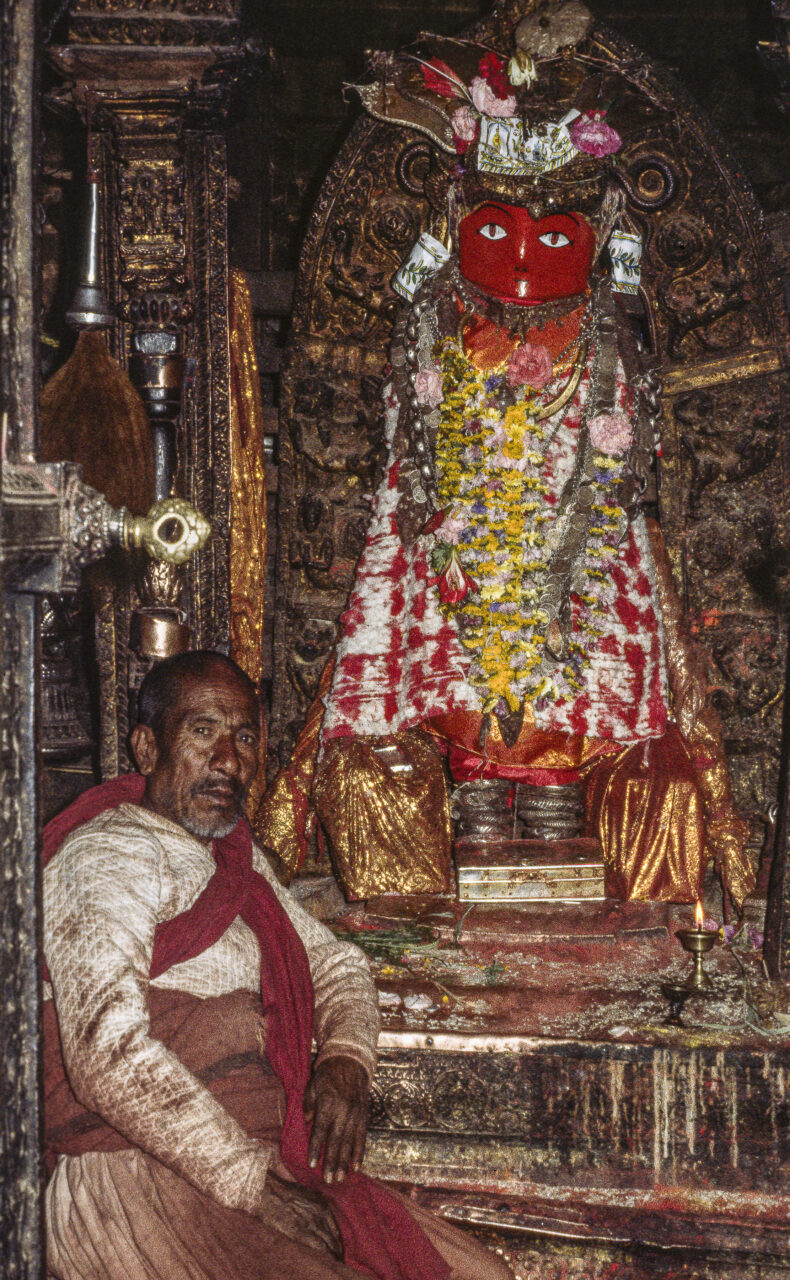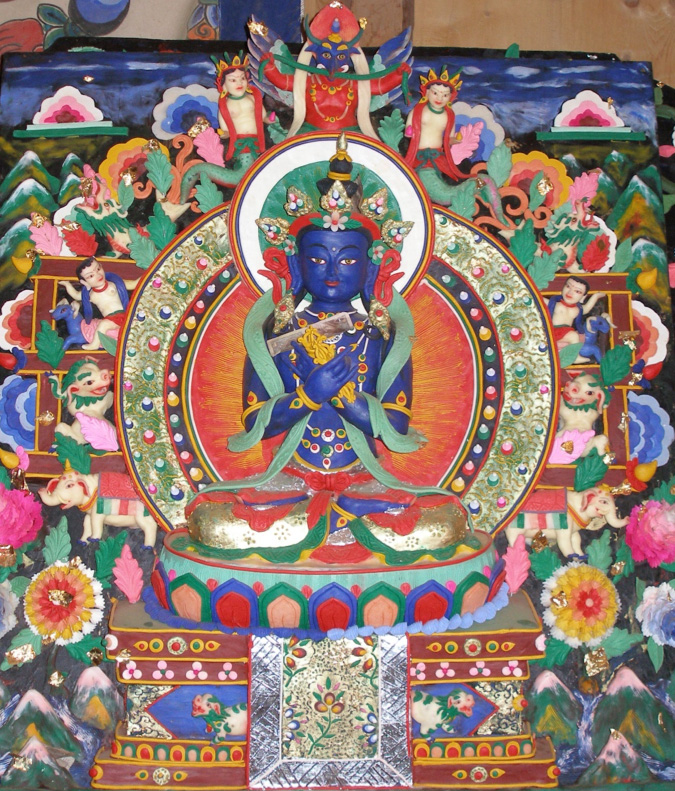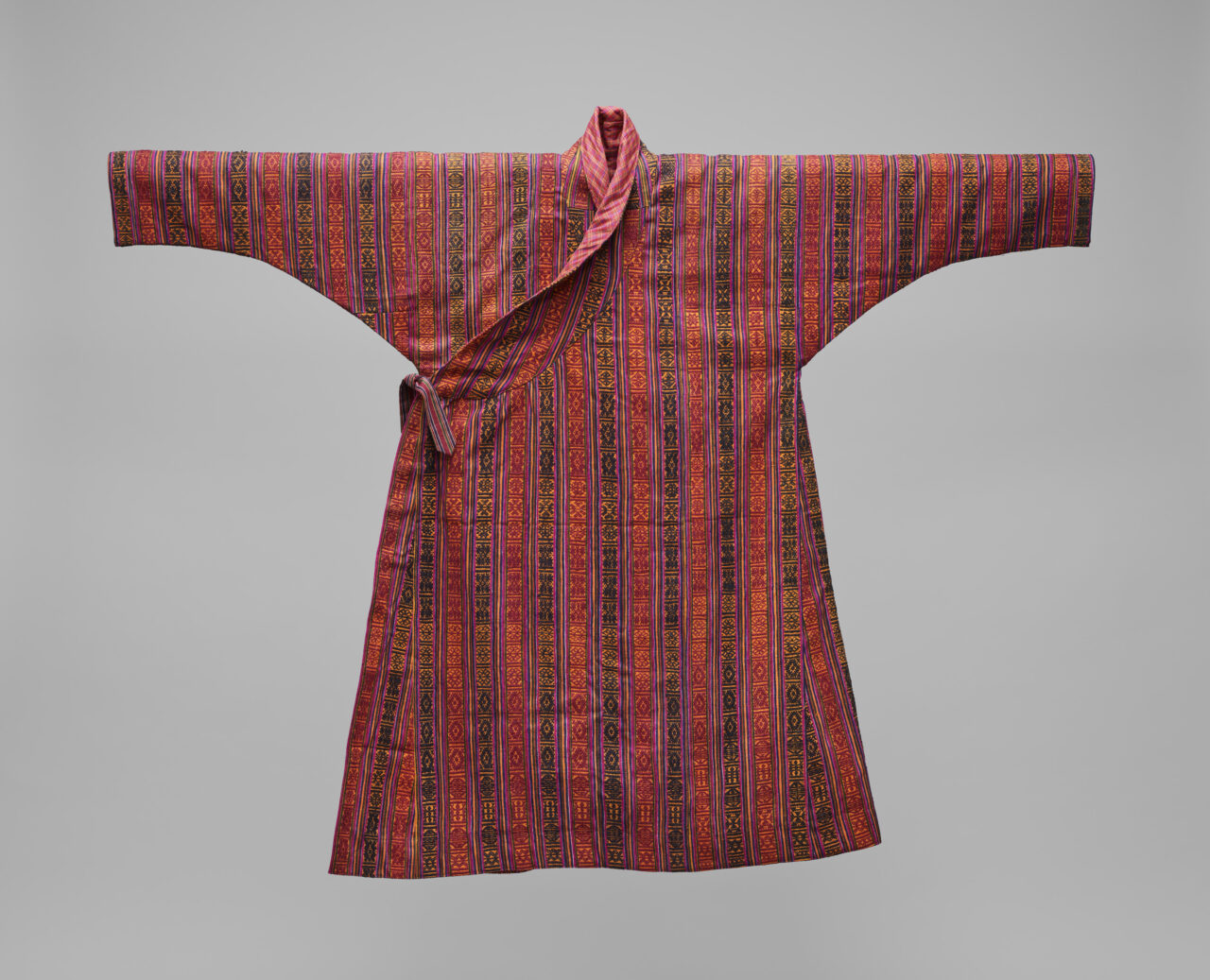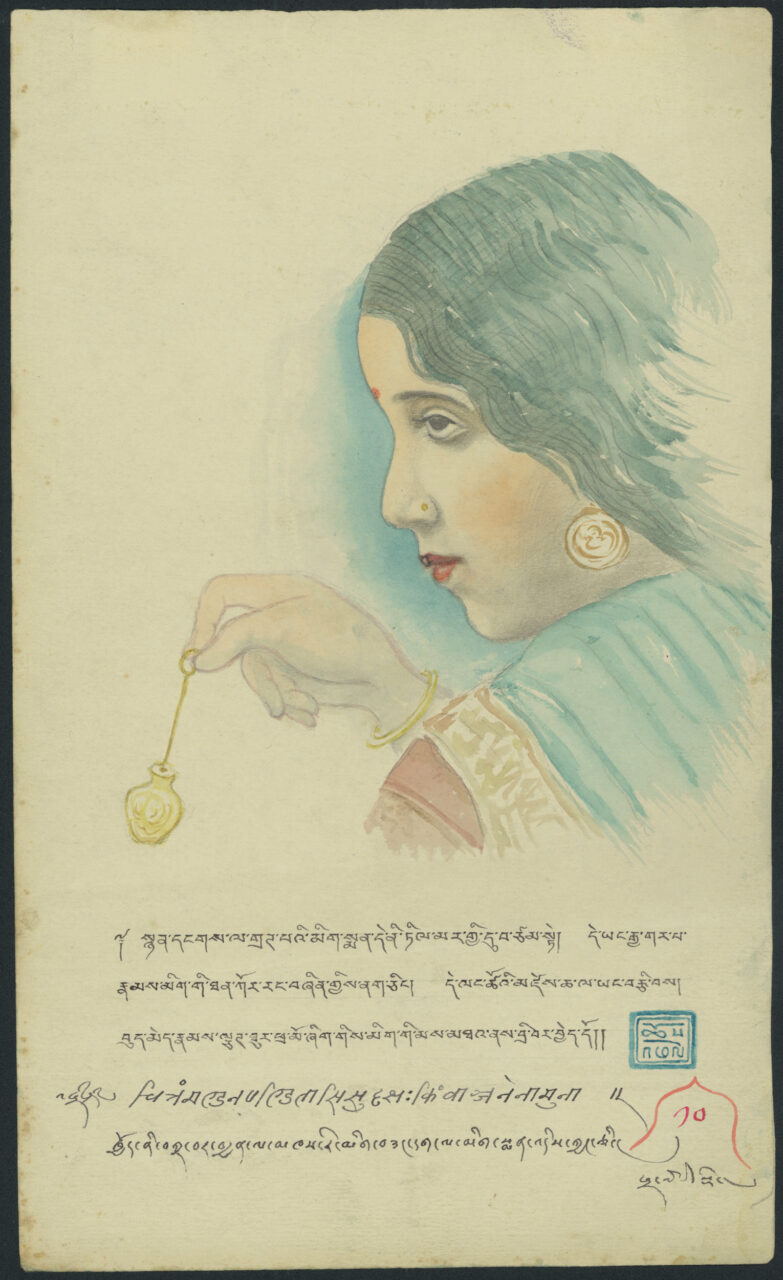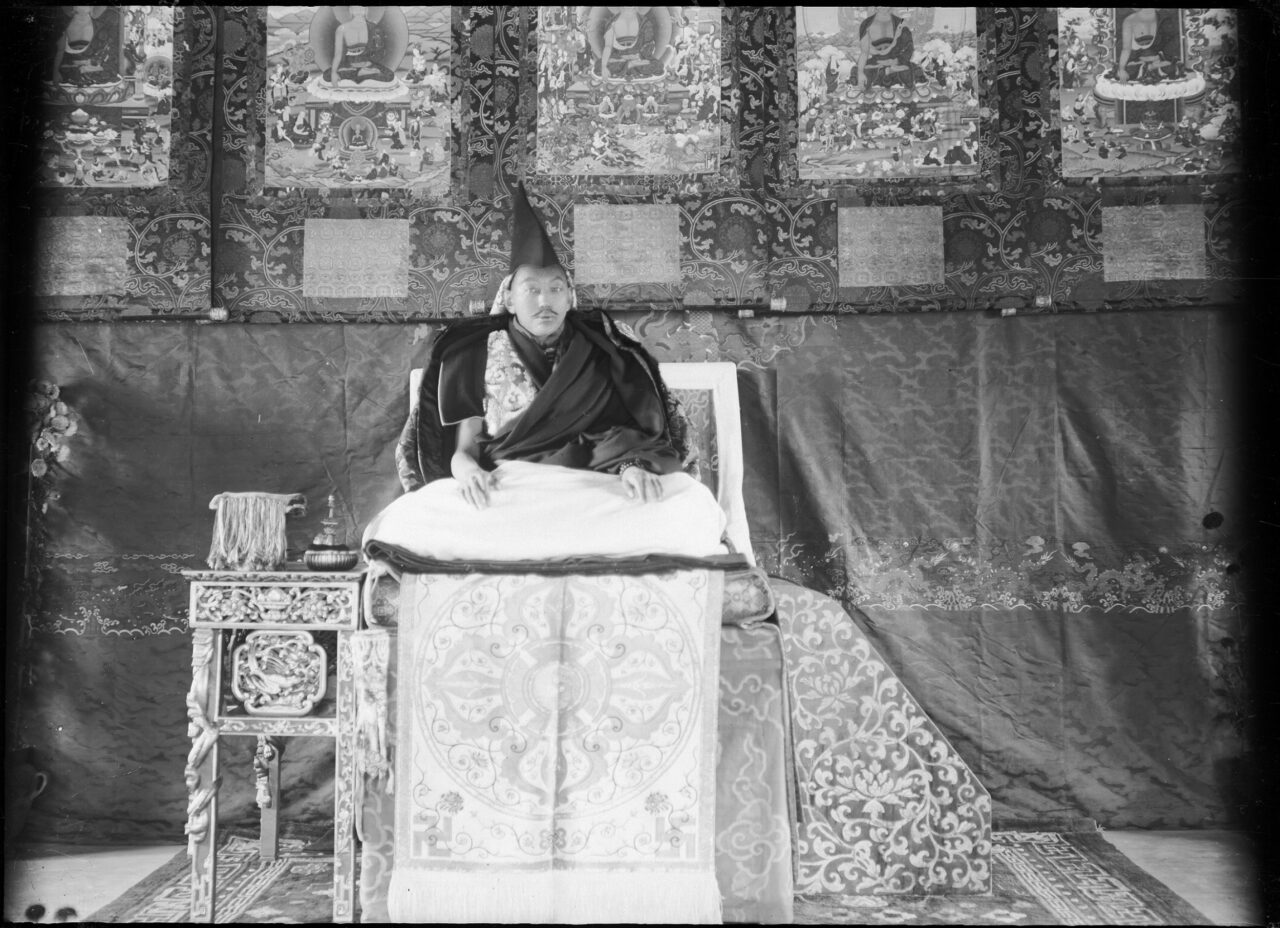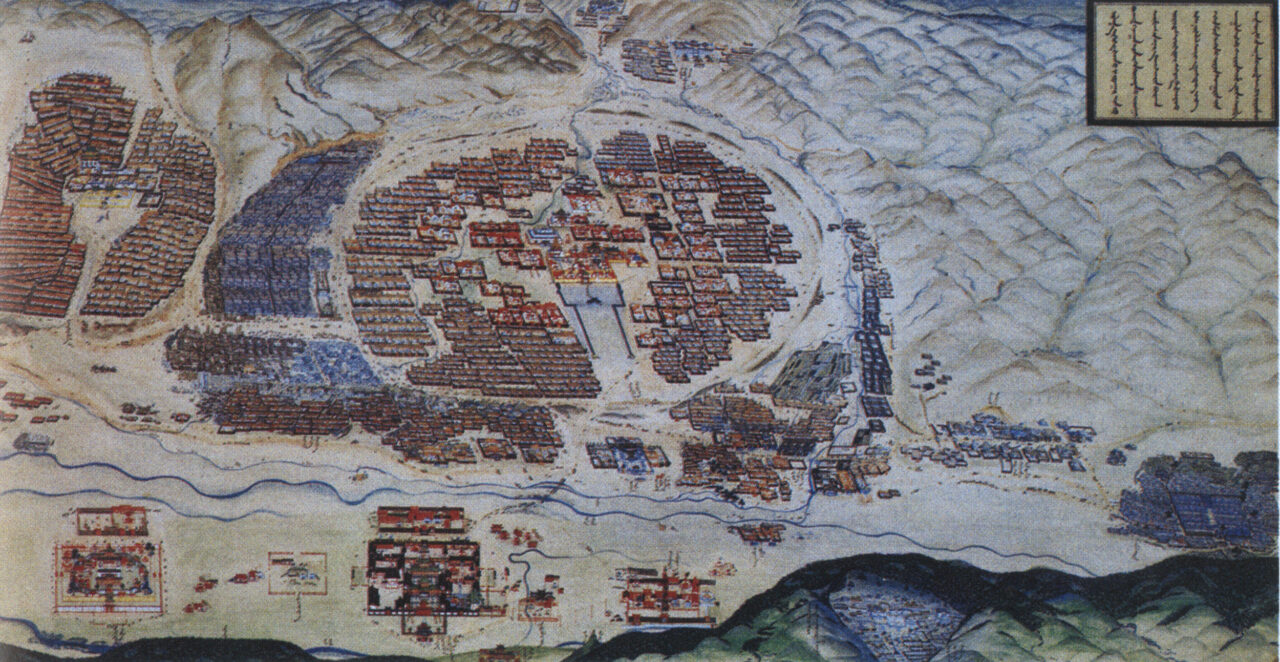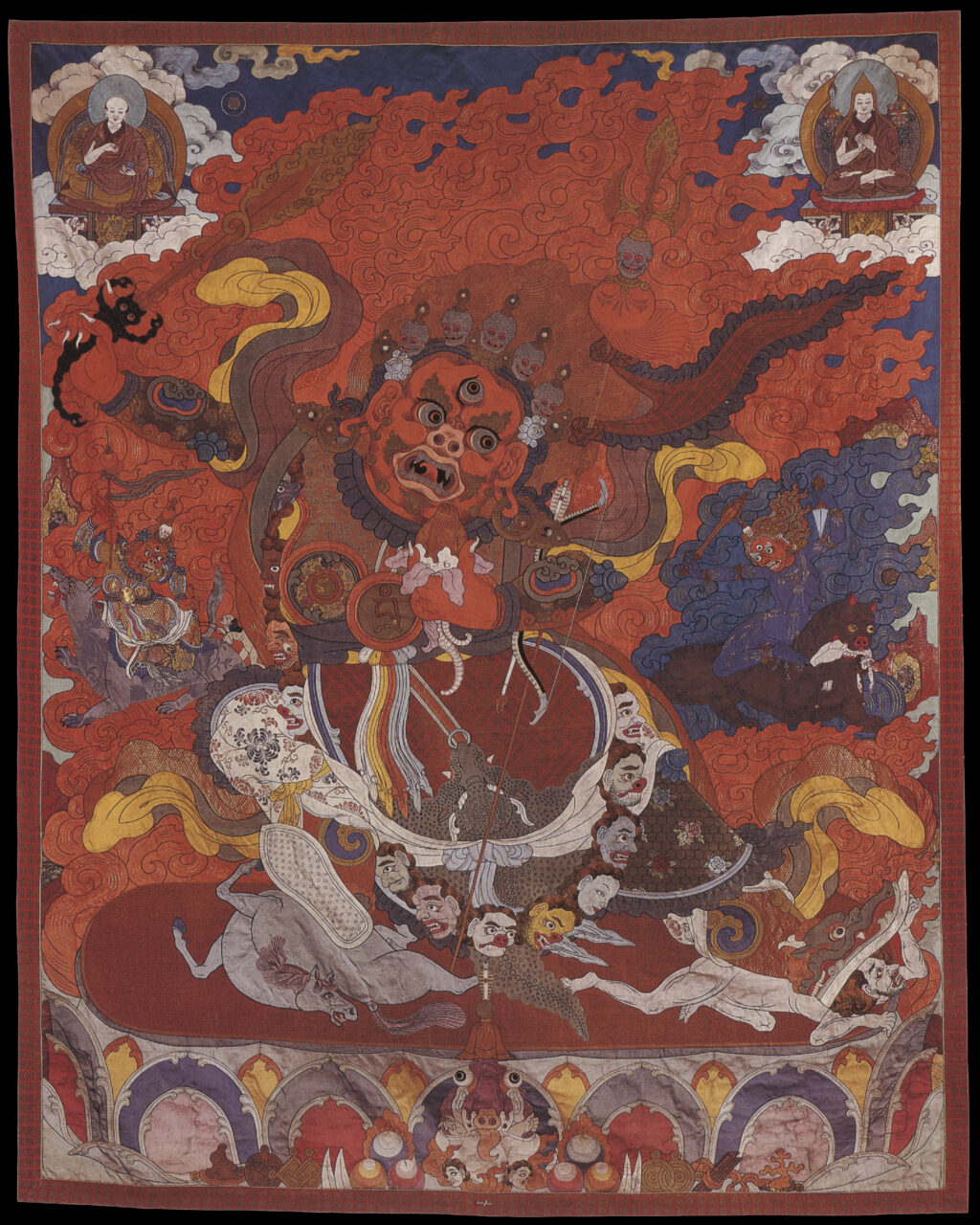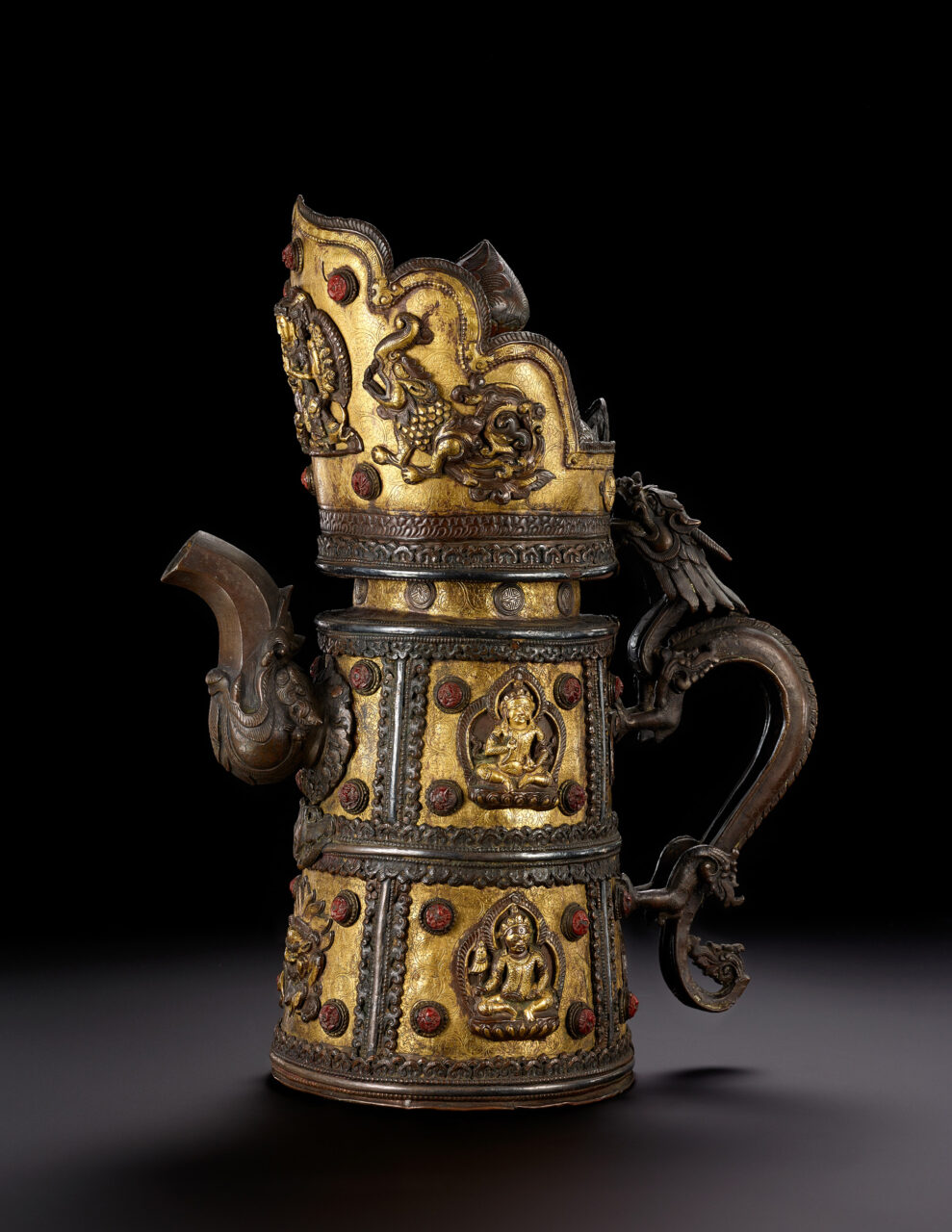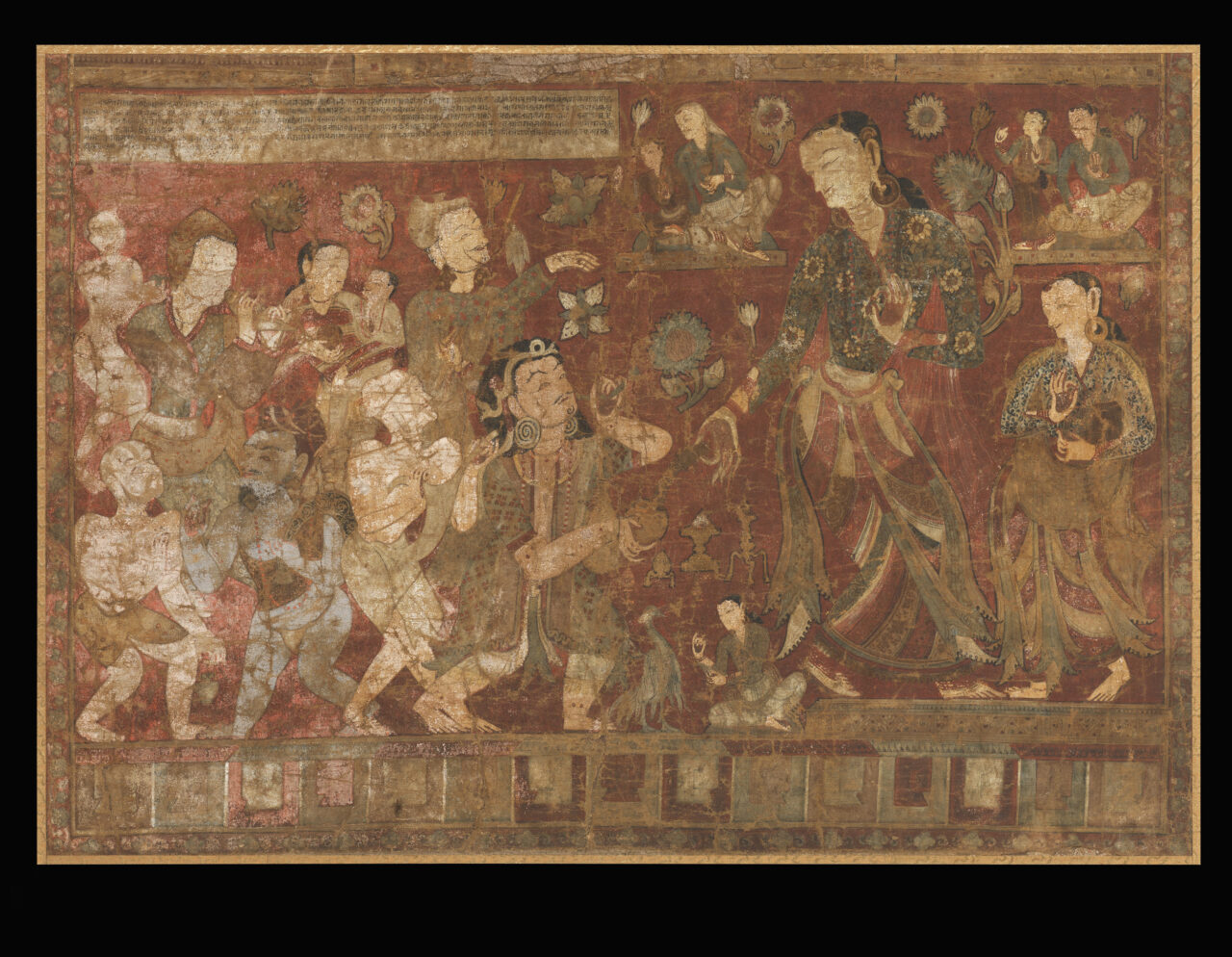In most Asian religious traditions, when an image of a deity is made, it must be made sacred (“consecrated”) by inviting the deity to inhabit it. A variety of rituals can be involved in this, including dotting the image’s eyes, visualizing the descent of the deity into the image, writing mantras on the back of a thangka, or placing sacred texts and mantras inside of a statue.
In Hinduism and Buddhism, mantras are short syllables or phrases that are thought to have power. Mantras may be chanted by devotees as part of daily practice, or pronounced during rituals to invoke the deity’s power. In tantric Hinduism and Vajrayana Buddhism, practitioners perform meditative deity-yoga by first visualizing “root” or “seed” syllables, and then generating the yidam deities out of these mantras during the process known as visualization.
In the Buddhist context, a relic is an object or body part of a past master or sacred figure, including Buddha Shakyamuni himself (bones, ashes from cremation, even entire mummified bodies). Another important category of relics is called “sharira” in Sanskrit (Tib. ringsel)— small, pearl-like objects that are found within the cremated remains of enlightened teachers. Another category, known as contact relics, includes things owned or touched by religious masters, such as the Buddha’s robe or bowl. Important types widely used in Himalayan regions are dharma relics (dharma sharira), which are pressed clay plaques inscribed with the verse of dependent origination or mantras. Relics can be placed inside stupas, ground up and used for medicine, or kept in temples for the reverence of pilgrims. A container that holds relics is called a “reliquary.”
A reliquary is any container that contains relics. Important types of Himalayan reliquaries include stupas and gau boxes.
In Tibetan Buddhism, a tsatsa is a small sculpture created by pressing clay into a mold. Tsatsas can depict deities, stupas, auspicious signs, and more. Some tsatsas have medicinal plants, or the cremated ashes of loved ones mixed into the clay and taken to various sacred sites to generate merit for their better rebirth. In Newar context, a grain of rice is added. Tsatsas are created to generate religious merit and are often consecrated and then placed within stupas, or made by pilgrims and devotees and left at sacred sites. Tibetans have been creating tsatsas since around the eleventh century, and tsatsa making remains a common practice among lay devotees today.
Vajrayana is one of the three great doctrinal divisions of Buddhism, along with Theravada and Mahayana. Vajrayana can be understood as tantric Buddhism. Historians debate when Vajrayana first appeared, but it was clearly understood as a separate tradition by the eighth century CE, and most of its major texts were written by the twelfth century. Vajrayana ritual and art are characterized by visualization, deity yoga, wrathful deities, mandalas, mantras, initiations and empowerments (abhisheka), and ritual sexual union. These teachings are transmitted in texts called tantras and sadhanas, as well as through secret instructions (Skt. upadesha) from a teacher. Essentially all Himalayan Buddhist traditions integrate Mahayana and Vajrayana practices.
In Tibetan Buddhism and Bon, a gau is an amulet box, often gilded or painted, that contains sacred objects like images, mantras and dharanis, relics, tsatsas, and medicinal pills. Tibetans often wear gaus on a cord around the neck, or slung across the shoulder.




